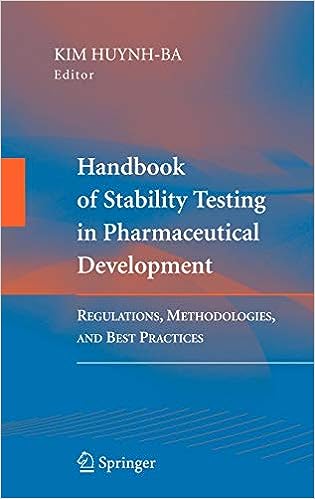Predictive modeling plays a crucial role in stability assessment by enabling pharmaceutical companies to forecast product stability, degradation kinetics, and shelf-life under various storage conditions. By leveraging mathematical models, statistical analysis, and mechanistic understanding of degradation pathways, predictive modeling enhances the efficiency, accuracy, and reliability of stability testing.
Key Applications
Predictive modeling is applied in stability assessment for various purposes:
- Shelf-Life Prediction: Predictive models estimate the shelf-life of pharmaceutical products by extrapolating stability data from accelerated conditions to real-time storage conditions, considering factors such as degradation kinetics, temperature, and humidity.
- Formulation Optimization: Models optimize formulation composition and processing parameters to enhance product stability, minimize
Methodologies
Common methodologies and techniques used in predictive modeling for stability assessment include:
- Statistical Analysis: Regression analysis, survival analysis, and time-to-event modeling quantify relationships between stability data and storage conditions, enabling prediction of degradation kinetics and shelf-life.
- Mathematical Modeling: Mechanistic models, such as kinetic models, degradation pathways models, and degradation rate models, simulate degradation processes and predict stability outcomes based on underlying chemical and physical principles.
- Machine Learning: Machine learning algorithms, including neural networks, support vector machines (SVM), and random forest models, analyze large datasets, identify patterns, and generate predictive models for stability assessment based on input variables and stability outcomes.
- Artificial Intelligence: Artificial intelligence (AI) techniques, such as deep learning, reinforcement learning, and natural language processing (NLP), enhance predictive modeling capabilities by learning from data, adapting to changing conditions, and generating actionable insights for stability assessment.
Benefits and Challenges
The use of predictive modeling in stability assessment offers several benefits:
- Enhanced Efficiency: Predictive models accelerate stability assessment, reduce testing time, and optimize resource allocation by efficiently leveraging existing data and knowledge.
- Improved Accuracy: Models provide accurate predictions of product stability, degradation kinetics, and shelf-life, reducing uncertainty and risk in decision-making processes.
- Optimized Formulation: Predictive models guide formulation optimization efforts, enabling the development of stable, high-quality products with extended shelf-life and improved patient outcomes.
However, predictive modeling also presents challenges, including the need for robust validation, integration of complex data sources, and interpretation of model outputs in the context of real-world conditions and regulatory requirements.
Conclusion
Predictive modeling is a powerful tool in stability assessment, offering pharmaceutical companies insights into product stability, degradation kinetics, and shelf-life under various storage conditions. By leveraging advanced methodologies and techniques, stakeholders can optimize formulation development, accelerate regulatory approval, and ensure the quality, safety, and efficacy of pharmaceutical products.
